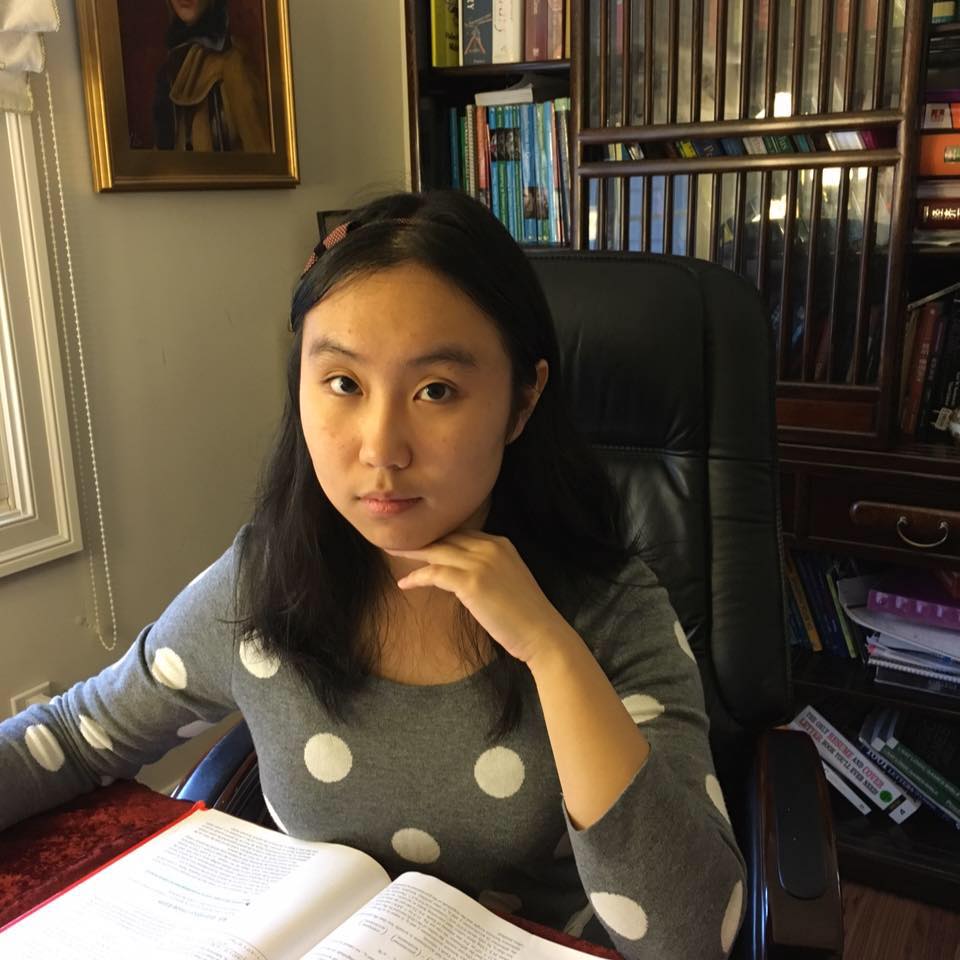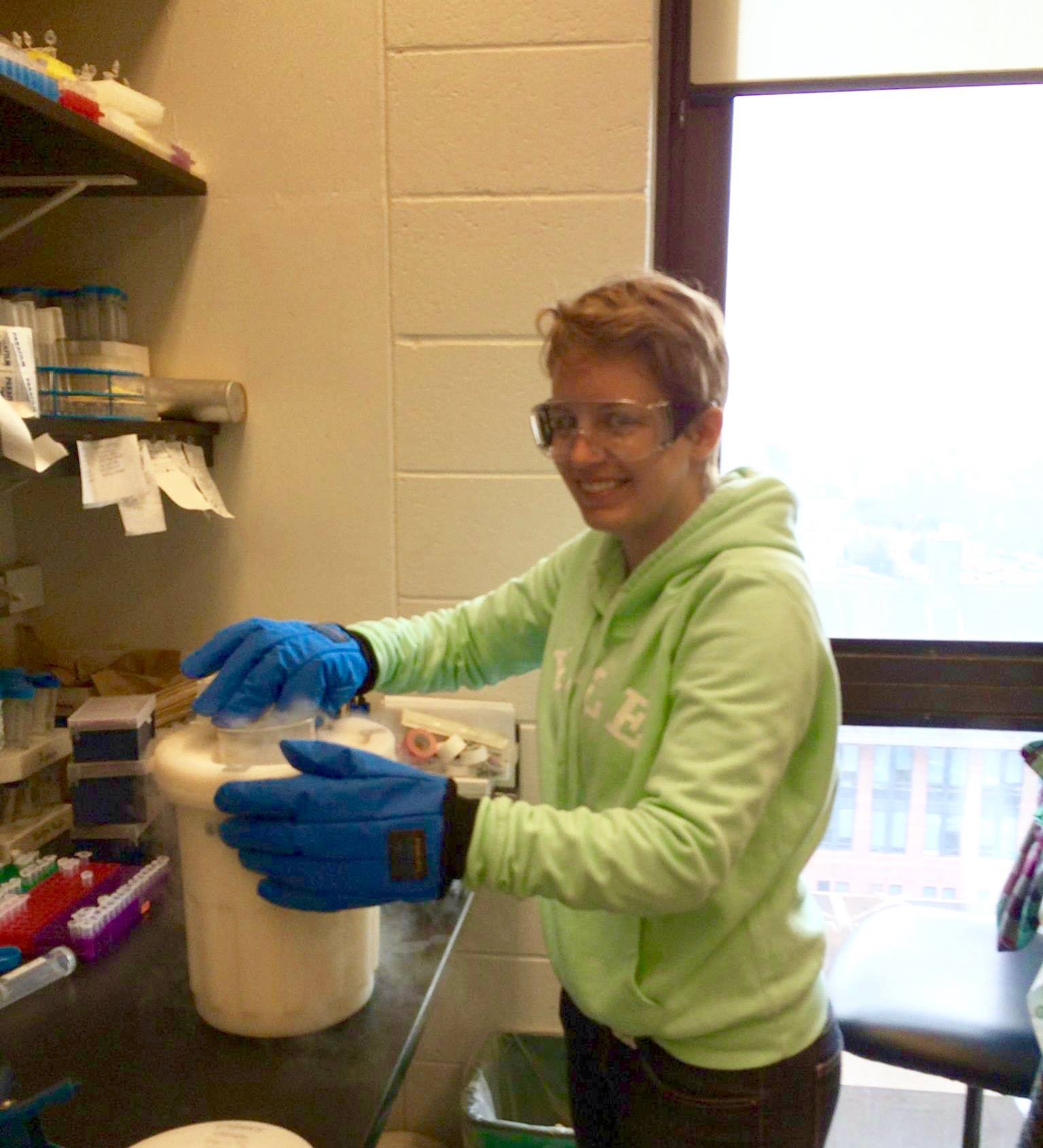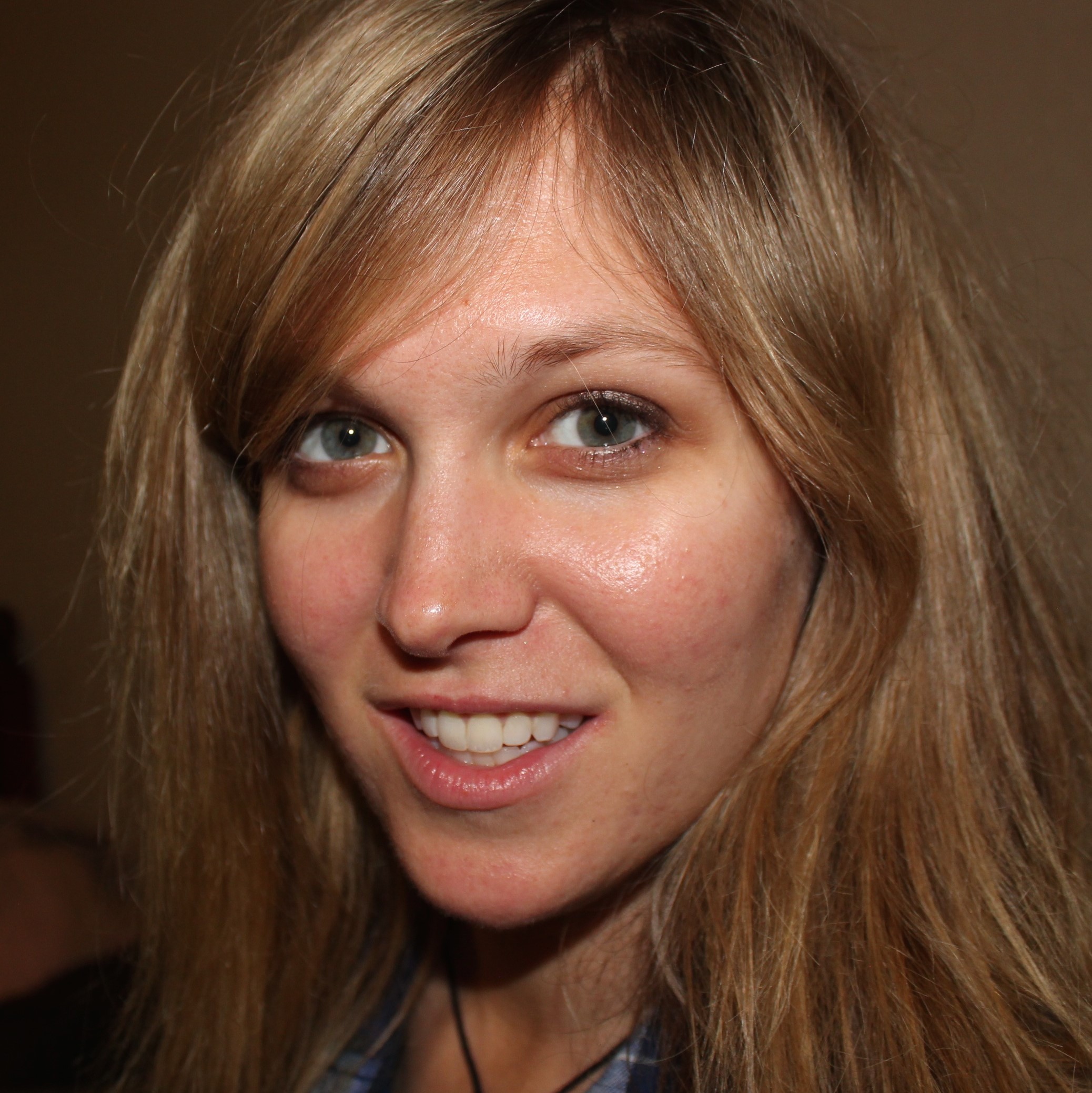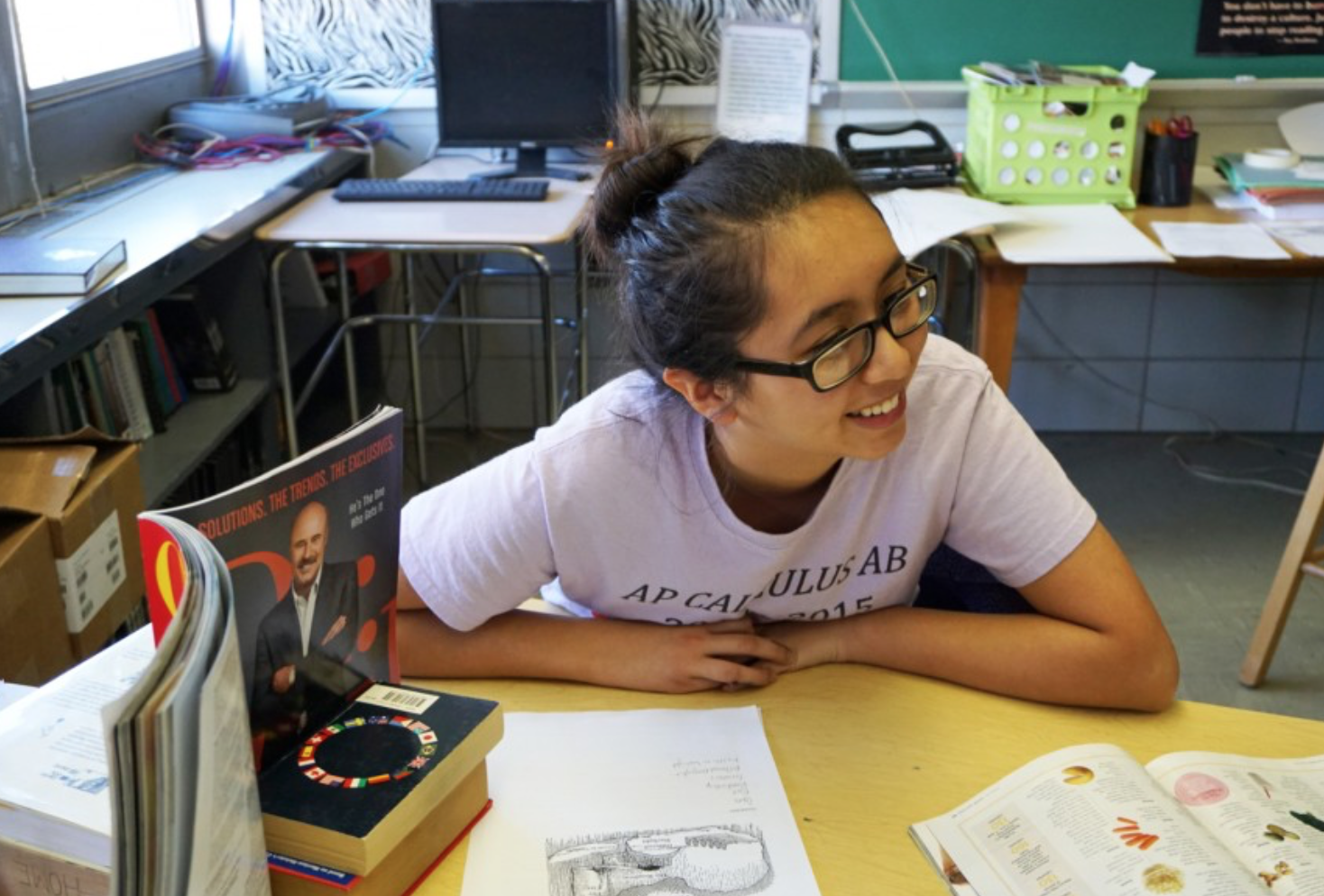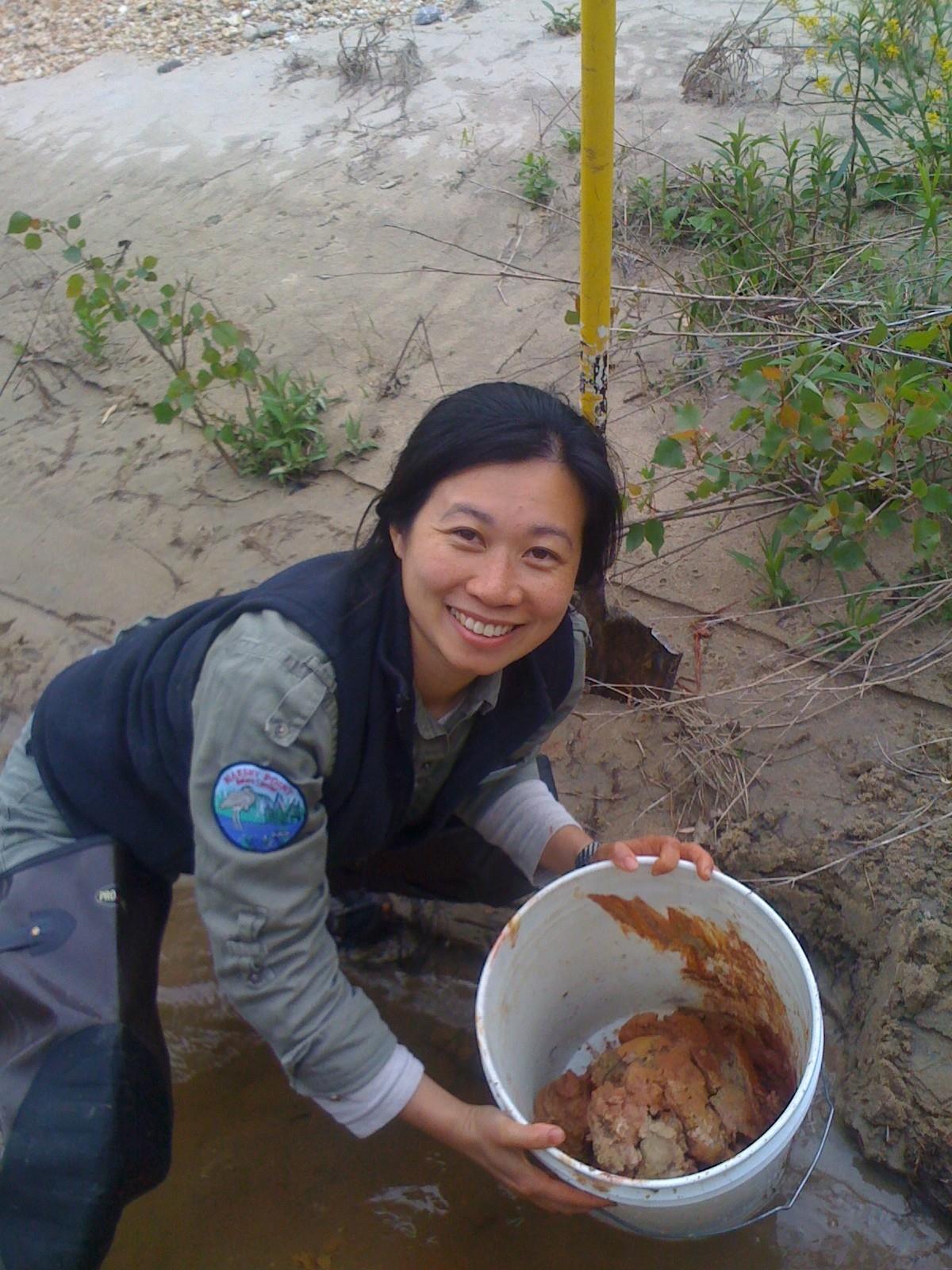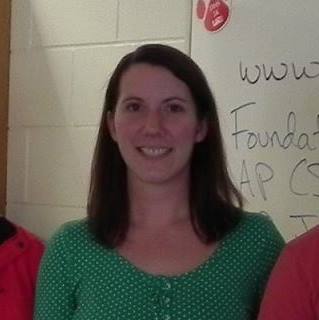MIT
Cynthia Liu is a current undergraduate at Massachusetts Institute of Technology (MIT), a member of the class of 2020. She hopes to major in Courses 6 and 18, which stand for computer science and math respectively. She greatly enjoys problem-solving, and in her free time likes playing clarinet, creative writing, and dancing. As a high school student, Cynthia was a member of the US Physics Team, conducted research at the National Institute of Standards and Technology NCNR in machine and reinforcement learning, and also founded a small community math club, Potomac Math Club, for local middle school students. At MIT, she hopes to expand upon these experiences and conduct research in computational mathematics, as well as participate in outreach activities such as Girls' Angle (which spreads mathematical interest among girls in the Boston, Massachusetts area).
What motivated you or inspired you to go into your field?
One autumn afternoon in seventh grade, my mom walked into my study.
“I think you should participate in math team,” she said.
I eyed her quizzically. “Who does math team?”
Nonetheless, I found myself quivering and friendless in the back of the algebra teacher’s room, glancing at peers whom I immediately assumed were better than me. These people already set up servers, knew that “thermodynamics” was a subfield of physics, talked about these competitions like “Science Bowl” and “Math Counts” that I had never heard of.
The coach motioned for everyone to hush. She stood, and passed out our first two practice problems.
I panicked. I saw the word “variable” in problem two and my vision blurred. I took a deep breath and leaned over the desk, magnifying the problems in my eyes.
Wait what? Just solve for the altitude to the hypotenuse? That’s all?
I finished the first problem in a minute. I blinked. I went to the second problem, which was slightly less trivial, but still very straightforward. Two answers on the paper with five minutes of eight remaining, I could only confusedly glance between these answers and read the questions.
“Time!”
The coach collected our papers. Her jaw was clenched, her eyes toxic. She glared at every single answer slip with resounding disappointment. Finally, she sat at her desk.
“Cynthia?” The coach called.
My eyes shot up. Of course, I thought, I got the questions wrong.
“You’re the only one who got both questions right.”
That was how I got my start in STEM: middle school math competitions. All it really took was a suggestion from my mom, and later the support of my middle school coach. With these two things, I opened myself up to math, and discovered that it was far more beautiful and intricate than quadratic factoring worksheets make it seem.
The rest was up to me. I focused on math throughout middle school and the first two years of high school. A desire to excel and support from friends led me to participate in physics and biology competitions, and in general to open my mind to other fields.
Today, I hope to double major in computer science and mathematics at MIT. Although my competitiveness still burns, I’m now more motivated by learning, and in the future I hope to form my own tech start-up for data analysis software. Furthermore, I discovered my passion for teaching in high school, and I hope to teaching via Girls’ Angle at MIT, an organization dedicated to increasing girls’ interest in math.
What has been the most rewarding about your career/interest?
The most rewarding part of my internship is my ongoing discovery of the prevalence and importance of math. Machine learning algorithms use least squares optimization, gradient descent, and require proofs of convergence or low theoretical complexity. Crystallography uses linear algebra to convert between various crystal and machine spaces, as well as algebras in non-Euclidean space. Although my project was never directly related to math, it is clearly the invisible backbone of everything I do, and it gives me hope for success in the future.
What kind of obstacles are in store for today’s young women? What are some words of advice you believe will help girls today overcome these obstacles?
3:20 on a Wednesday, and the dismissal bell rings. I immediately head from BLISS tutoring (I am a teacher assistant and occasional lecturer for honors Precalculus) to the math team meeting room. I take the pile of lecture transcripts, prepared by another captain, and hand them out to the steady stream of entering students.
Nearly all of those students are male. They sit in tight clusters, kicking badly folded triangles back and forth, calling some Virginian student trash and talking about their conversation with Evan Chen (a student who was famously rejected from the American IMO team, and proceeded to join Taiwan’s and then get a perfect score at IMO) last evening. Meanwhile, the three or four girls who do enter sit in the back corner and appear engrossed in their selfies.
I think one of the biggest obstacles for today’s young women is the so-called “genius cult.” I read an article revealing that the degree of “genius” supposedly required for a field was almost perfectly correlated with the percentage of women pursuing the field. This is especially important in STEM, where it superficially appears that several dozen “great minds” such as Newton, Einstein, Edison, and Watson and Crick made all the progress.
As a captain of both math team and physics team, I see effects of the genius cult every day. It begins with the young men. I see boys calling difficult problems “trivial” in front of their friends. I see them throwing around technical terms such as “Hamiltonian,” “Minkowski,” or “Euclidean algorithm” that seem frightening to a newcomer.
Then, girls hear the boasting, and often become afraid. They are afraid because the problem actually isn’t “trivial” and because they just haven’t learned the definitions of “Hamiltonian” and “Minkowski diagram.” Immediately assuming that they are not as smart as their bragging male counterparts, they soon form a long list of excuses whose sole purpose is to keep people thinking that they’re “smart enough.” Excuses I’ve heard all too often include: “I didn’t study at all” “I wasn’t paying attention” “I bs’ed this entire test and I’m probably only getting a (really high score).”
Now that we’ve identified the problem, I believe that the best way to combat this is awareness. Scientific progress is not made by several dozen luminaries throughout history. Studying will improve your performance in academics and competitions. People will not judge you if you perform below your level every so often, because everyone does. And most people will not judge you as long as you try and you care. And although this primarily targets girls, who suffer more from the genius cult, many boys are also afflicted with imposter syndrome and will benefit from this awareness.
Once a student really internalizes these truths, the student will begin finding confidence in his or herself. This process is difficult and lifelong, but ultimately it will let you discover that you have more potential than you ever first believed.
Why is it important to close the gender gap in STEM fields? Why are education and inclusion for girls pursuing STEM necessary?
“Wait, how many people got into MIT this year again?” Asked a junior friend.
“Seven. Five girls, two boys.” I responded.
“Right. Psh, girls, those don’t count.”
Today, fifty years after the civil rights movement, girls now compose nearly half of the MIT student body, and proudly boast leadership positions ranging from swim coaches to Democratic presidential nominees.
The problem with this is that we—students, employers, and education institutions—have long forgotten why we want more diverse representation in the first place.
I find that colleges do a terrible job of explaining this. They want “people of different backgrounds,” which is extremely vague and sounds suspiciously like a quota. Then, instead of explaining themselves more, they proceed to post statistics about the number of students who would be the first in their family to attend college, and to brag about the number of ethnic or multicultural groups present on campus.
The problem with this is that many boys, especially white and Asian boys, take this information as proof that colleges purposely seek out people that are different, just for the purpose of showing off, and at the expense of themselves. Furthermore, girls assume the same thing, and feel like “I got in just because I’m a girl, so-and-so is way smarter and didn’t get it.”
This leads to the assumption that boys are still superior in certain subjects. But this assumption itself is self-fulfilling: it can lowers girls’ scores far more significantly than any potential biological discrepancy. I once read an article about college women who, when reminded at the beginning of a difficult test that males tend to perform better, performed less than half as well than if they were not reminded. Less than half. That is the difference between an A (90-100%) and failing (60% and below).
This discrepancy, as well as today’s unusual obsession with scores (AP, SAT, ACT, a dozen competitions…) forms a perfect recipe for completely unconfident girls. Yet what diversity really wants to do is to give girls, and other underrepresented groups, another chance to gain confidence.
The reason we need diversity, the reason we need to close the gender gap actually has nothing to do with quotas. It’s because we need to convince people of all genders and ethnicities that they can succeed in whatever field, whatever task. To encourage them to test the waters of some subject, and then for them to realize, hey, it’s pretty fun. To give them enough confidence and opportunities to let them focus on their project at hand. In a nutshell, the purpose of diversity is to tell people “you can do this,” and to let them focus on doing their best. Winning is secondary and should be kept in a footnote.
Tell us about your job. What are some of your responsibilities?
What is the environment like in your workplace?
Because I just graduated from high school, I don’t have a formal job. However, I do have a wonderful internship.
In brief, I am an intern at the NIST Center for Neutron Research, or NCNR, in Gaithersburg, Maryland. My project this year is “Constructing a Reinforcement Learning Environment for Determining a UB Matrix.” What that essentially means is that I’m enabling a generalized artificial intelligence algorithm to learn how to conduct efficient crystallography experiments. Thus, it’s a project at the intersection of computer science and physics. Today, I have a functional program that runs episodes and epochs without issue. With the remaining weeks of summer, I will be working on upgrading the training process to include more steps of the experiment, and on testing.
Responsibilities as a SHIP student include actively reading papers and related materials to quickly learn, and to independently complete as much of your project as possible. NIST, unlike other locations, tends to give students projects that are deeper than “analyze this data” or “prepare all the samples.” Therefore, it places a large emphasis on enabling students to complete project autonomously, with direct help from mentors only when asking questions or when very stuck.
There are two important factors in the environment I’d like to mention. Firstly, as a government facility, we are shrouded in bureaucracy. It takes no less than two days to complete all the training modules (for lab safety and emergency procedures, even though I don’t work in a lab). The process of badging when I interned in 2015 lasted a full week, because the FBI couldn’t find my fingerprints. This extreme deliberation is typical of all government facilities, and is something to keep in mind if you’re interesting in doing research for the government.
The second factor was my office. Unlike nearly every other high school intern’s office, mine was interns only, and shared with five other students. As a result, students can ask one another questions, and help each other with high-school-specific experiences such as how to get sufficient driving hours while studying for the SAT and doing an internship. It also helps greatly with the imposter syndrome—often experienced when one first learns about his/her project and doesn’t understand a single word of it—because everyone else feels the same way. And of course, it lets us goof off occasionally, whether by playing Protobowl or by watching Netflix.

